This was published 5 years ago
The ultimate travel guide to Japan: Tips on etiquette, where to go, what to do and eat
By Ben Groundwater
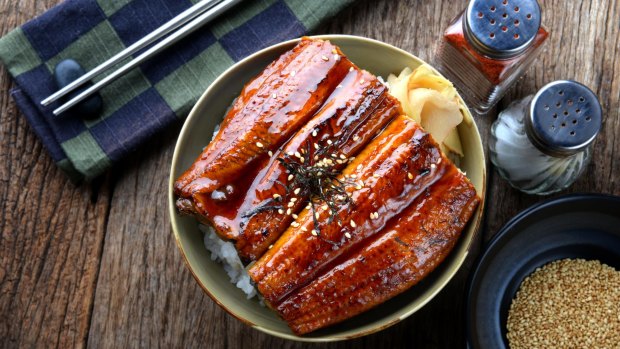
Japanese eel grilled with rice.Credit: Shutterstock
There's a good chance you've already been to Japan. If you're Australian and you love to travel, this country has probably already captured your heart as a safe and yet thrilling destination, a place in which to check out from everything you know and to embrace another way of life, another way of living.
To travel in Japan is to be constantly amazed. It's to marvel at ancient customs and hyper-modern trends. It's to be bowled over by the kindness of strangers. It's to be taken aback by the sheer foreignness of this incredible land.
Australians love it. In the past 20 years there has been a phenomenal 959 per cent jump in the number of Australian tourists visiting Japan. We love to ski there: some 70,000 Aussie powder hounds poured into Japan last January alone. We love the cherry blossoms, too: another 60,000 visitors arrived this May.
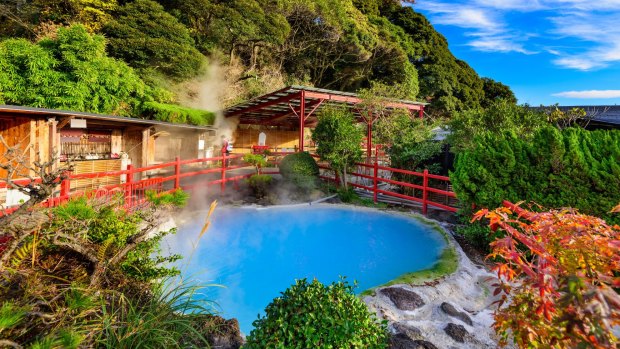
Hot springs at Kamado Jigoku. Credit: Shutterstock
There's no real downtime, though, for the influx of antipodean adventurers into the Land of the Rising Sun. Our fascination knows no bounds, and that's in large part because Japan is up there as one of the pinnacles of the travel experience, a country that never fails to excite, bewilder and enthral.
And yet, how much of Japan do we actually see? For many, a visit to this country means a tour of the "golden triangle", the justifiably famous triumvirate of Tokyo, Kyoto and Osaka. For snow bunnies it's a visit to Niseko or possibly Hakuba. And those are excellent choices for your first trip to Japan. But there's more – so much more – to discover in Japan on a second visit, a third visit or a fourth.
There are cities that hold just as much excitement as Tokyo; ancient strongholds with the history of Kyoto; ski resorts with the thrills of Niseko. There are other areas, too, that offer insights into Japan's cultural quirks: into onsen culture, into the appreciation of nature, into the tradition of samurais, geishas and emperors. There's reason to revisit this land, too, for its upcoming events, as Japan prepares to host the Rugby World Cup in 2019, and the Summer Olympic Games in 2020.
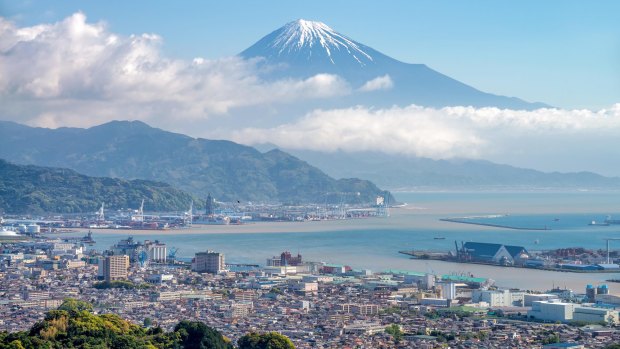
Mount Fuji and Shizuoka town from Nihondaira hill.Credit: Shutterstock
If you've already been to Japan, there's a good chance you want to go back. And here's where to go.
THE FRIENDLY SOUTH: KYUSHU
Rarely will you find an area more aesthetically blessed than Kyushu, the verdant, volcano-spiked island to the south-west of the Japanese mainland, Honshu. Vast calderas hold forests and rivers in their cupped hands; steam rises from natural onsen springs; beaches call out with tropical allure. Kyushu is an outdoor-lover's paradise, an island riven with hiking trails through spectacular landscape, with everything from challenging multi-day walks to short, pleasant strolls available.
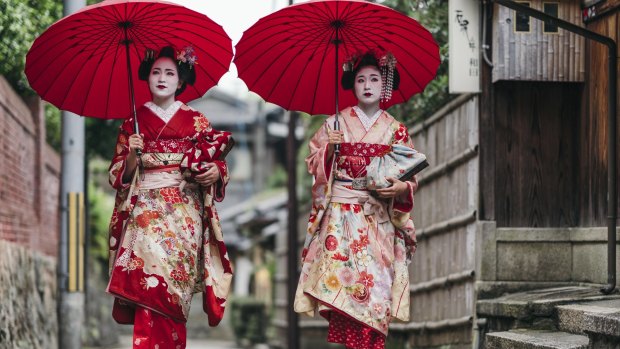
Maiko geisha walking on a street of Gion in Kyoto.Credit: Shutterstock
There is also plenty of culture in this southern outpost, where history in ancient settlements such as Kumamoto mixes with modernity in Fukuoka; where bustling port towns such as Nagasaki contrast with sleepy mountain villages such as Kurokawa Onsen. Fukuoka might just be Japan's friendliest metropolis, a place seldom visited by Western travellers, and yet so attractive as a gateway to Kyushu's treasures. Kumamoto boasts one of Japan's best-preserved castles; Nagasaki abounds with World War II history; and Kurokawa is one of many onsen retreats on this volcanic isle.
THE FARTHEST FLUNG ISLANDS: OKINAWA
Okinawa is not the Japan you've been picturing. The more than 150 islands that make up this southern prefecture feel more like Hawaii than Japan, with palm-fringed beaches abutting coral reef, and forest-covered volcanoes rising from the ocean. Okinawa is made up of three groups of islands: the Okinawa Islands, home to the region's eponymous and largest island; the Miyako Islands, home to deserted beaches and warm waters; and the southernmost Yaeyama Islands, which are all dense jungles and stunning reefs.
The entire prefecture is heaven for outdoors types, who can scuba-dive and snorkel, hike and bike, or just wiggle toes in soft sand. There's also plenty of history and culture here which has been influenced over centuries by the Chinese, the Thais and the Americans. Food here is a highlight, and ranges from the region's vegetable-heavy traditional cuisine to more modern dishes such as "taco rice", a bizarre but tasty mash-up of ingredients and cultures favoured by US servicemen.
NEXT-LEVEL MOUNT FUJI: MOUNT ASAHIDAKE, HOKKAIDO
It's tempting to join the crowds and attempt to summit that most famous of Japanese peaks, Mount Fuji. However, there's an alternative, and it's just as picturesque and a lot more peaceful: Mount Asahidake, the dormant volcano that is the crowning glory of the Daisetsuzan National Park in Hokkaido, Japan's northernmost island. Hokkaido is all about natural beauty, and it's most obvious around Asahidake, a snow-covered peak that at 2290 metres high is easily accessible to climbers. Once you're done conquering the summit, there's more to enjoy in Daisetsuzan too: vast fields of wildflowers, alpine forests, waterfalls, the chance to spot native bears, hike excellent trails and stay in picturesque campsites. Asahidake Onsen is a small resort at the base of the mountain, the perfect place from which to explore and soak.
If you're visiting Daisetsuzan, it's also worth leaving time to call past Hokkaido's largest city, Sapporo, home to the eponymous – and delicious – beer, as well as a whole street of ramen restaurants, a park designed by Japanese architect Isamu Noguchi, and "soup curry", an extremely tasty local specialty.
THE OTHER KYOTO: KANAZAWA
If you've already been to Kyoto then you know about its attractions: the temples and gardens, the shrines and ancient pathways, the feeling that history is at your fingertips. You also, however, know about the downside: the tourists. Kyoto is extremely popular, meaning you're forced to share that peace and tranquillity with about a million of your new best friends.
Need an alternative? Try Kanazawa, another ancient city with plenty of the charm Kyoto boasts, though without the popularity. Kanazawa is in the Ishikawa prefecture, a finger of land off the central west of Honshu. It was the seat of a powerful feudal clan during the 17th and 18th centuries and as such still boasts plenty of signs of wealth, including a well-preserved samurai district, and two Kyoto-style teahouse districts, with their traditional wooden homes and geishas walking paved streets.
Kanazawa's main attraction, however, is Kenrokuen, considered one of Japan's most beautiful gardens, a sprawling complex of perfectly manicured trees and flowers surrounding two ponds and a burbling brook.
THE HISTORIC CENTRE: MATSUYAMA
The island of Shikoku is the least visited of Japan's four largest landmasses, and yet has plenty to offer those willing to step off the beaten path. The Iya Valley, a lush and spectacular strip of land in the centre of the island, was only opened to the outside world in 1920, when the first road was built – these days it's a popular spot to hike through forests or soak in onsens. Shikoku also boasts hundreds of kilometres of rugged Pacific coastline, extensive mountain ranges, and rivers both mighty and quaint, as well as 88 temples that form a famous pilgrimage.
The largest city in Shikoku is Matsuyama, which, with a population of half a million, still isn't exactly a metropolis. Matsuyama is famous as being the home of eight of those 88 temples, as well as one of Japan's finest castles in Matsuyama-jo, and Dogo Onsen Honkan, a wooden, 19th-century bathhouse that makes use of an ancient hot spring.
THE SACRED SITE: KII PENINSULA
Here's a tip: get to the Kii Peninsula as soon as possible. Lonely Planet has elected this peaceful, spiritual area as one of its 10 "Best in Travel" locations for 2018, meaning the hordes might just be on their way. And there's good reason for them to come. So many of Japan's most important religious sites can be found in these misty mountains; so much of what makes Japan the country it is can be traced to this area.
Possibly the Kii's best-known attraction is the Kumano Kodo, a network of ancient hiking trails that snake their way through the dense, moss-covered forests that cover the mountains. There are seven main routes that make up the Kodo, six of which have been declared UNESCO World Heritage Sites.
Another of the area's highlights is Koyasan, the birthplace of the Shingon sect of Buddhism, a mountain village where visitors can spend the night in a temple, eat the traditional food of the monks, rise in the early morning to watch a prayer ceremony, and immerse themselves in the traditions of the Kii.
THE TOKYO ALTERNATIVE: YOKOHAMA
You have to feel a little sorry for Yokohama. Here's an enormous, bustling city with plenty of character and loads to offer visitors, and yet it's placed right beside Tokyo – the most enormous, bustling and character-filled of them all – so no one pays it any mind. That is also, however, the key to Yokohama's greatness: it's a city for locals, where foreign faces are more a surprise than an annoyance.
Take the city's Noge district, for example. This is Yokohama's nightlife hub, where hundreds of tiny bars are packed into street after street, everything from jazz clubs to craft beer bars to US-styled honky tonk joints. It feels a little like Tokyo's famed Golden Gai in Shinjuku – except, there are barely any foreigners here. You can stride into any bar and be welcomed. The atmosphere is relaxed and friendly.
Yokohama has more to boast, too, including a large and lively Chinatown, a quirky Cup Noodle Museum, the impressive Yokohama Museum of Art, and a portside district with maritime displays and museums. And it's all a half-hour train ride from central Tokyo.
THE FUJI VIEWS: SHIZUOKA PREFECTURE
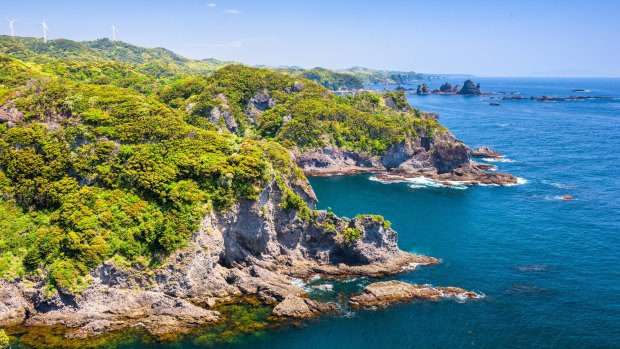
Credit: SHUTTERSTOCK
There's a serious thrill to seeing Mount Fuji's snow-capped peak appear on the distant horizon – it's like spotting the Eiffel Tower, or seeing the Colosseum in the flesh. This landmark you've seen so many times in pictures, and there it is. To experience this thrill again and again, head to the Shizuoka prefecture, a few hours south of Tokyo, where Fuji lurks every-present when the weather is right. Best place to view it is from Nihondaira, a plateau near Shizuoka City that boasts postcard-perfect vistas of Fuji.
And there's more to this prefecture than volcano views. There's great food, particularly around Shizuoka's largest city, Hamamatsu, which specialises in "unagi", or freshwater eel. There's culture in the many castles and shrines. And there's Shizuoka's true hidden gem: the Izu Peninsula. This ruggedly beautiful finger of land, to the south of Mount Fuji, has a laidback, surfy atmosphere, with plenty of spectacular coastline lapped by clear waters, as well as onsen resorts and forested hills. And it's only two hours by train from Tokyo.
THE NEXT NISEKO: APPI KOGEN
Just as Canada's most popular ski resort, Whistler, has morphed into "Whistralia", so has Japan's Niseko taken on a distinctly Antipodean vibe in the last decade as the powder hounds pour in from the land Down Under. Niseko is great, but it's not exactly a secret. Where you want to be going instead is Appi Kogen, the largest resort in the Tohoku region, in the north of Honshu. Appi is billed as the St Moritz of Japan, a purpose-built resort that appeared during Japan's early-'80s economic boom, and offers all the bells and whistles you could hope for, including excellent lift facilities with barely any queues.
Like Niseko, the snow falls on Appi heavily and frequently, meaning those chasing the famed "Ja-pow" will be in for a treat. This resort also offers excellent on-mountain food, and the chance to soak in an onsen (provided you're tattoo-free) at the end of a long day tearing up the slopes. About the only thing Appi Kogen lacks is nightlife: but hey, if the trade-off is vast hectares of untracked, waist-deep powder, it's probably worth it.
THE UNKNOWN ISLAND: SADO-GA-SHIMA
Sado is the sixth largest island in Japan, and yet what do you know about it? Probably nothing, which wouldn't make you unusual. This rocky outcrop, off the coast of the Niigata prefecture in northern Honshu, has a long history as a penal colony and a Buddhist retreat, but is far more popular with domestic Japanese tourists than it is with foreigners. It's worth giving this island a try, however, particularly those chasing traditional culture: there are three stunning temples on Sado, and locals are known for their taiko drumming demonstrations.
There are also natural attractions on this ruggedly beautiful isle, including long stretches of rocky coastline, forests riven by easily navigable roads, and rice paddies sprawling across valleys and plains. While Sado tends to be hectic and crowded during the third week of August, when those taiko drummers play, the rest of the year you'll have the place to yourself.
NEXT-LEVEL JAPANESE FOOD
10 DISHES YOU MAY NOT HAVE TRIED (BUT SHOULD)
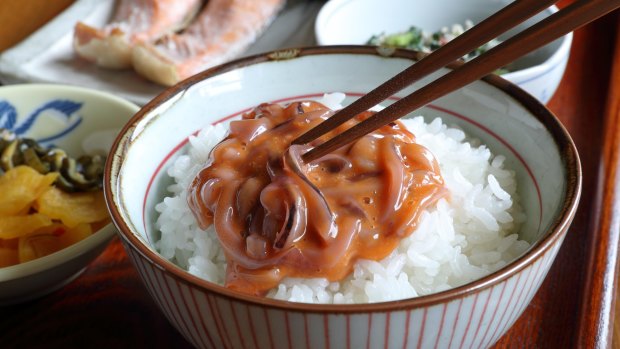
Credit: SHUTTERSTOCK
SHIOKARA
Shiokara is a beer snack beloved by the Japanese but reflexively avoided by foreigners: a dish of raw, chopped squid mixed with the fermented innards of said marine animal. Sounds horrible, but once you get past the slime factor and the whiff of fermented guts, this is a salty and delicious pairing for an excellent Japanese brew.
NATTO
This is another dish that gets visitors offside immediately. Natto is fermented soybeans, a pungent breakfast staple that's a little sticky, a little slimy, and very much an acquired taste. But you came here for authentic Japan, right? Place your natto on some rice and wash it down with miso soup, and you've had the breakfast of champions.
WAGASHI
Japan might be famous for its savoury cuisine, but the country also takes great care with its sweets, known collectively as wagashi. Wagashi are confections designed to be consumed with matcha, a sweetness to offset the bitterness of the tea. They're beautifully crafted and presented, often made using mocha, a thin rice cake, and red bean paste.
PASTA
Yes, pasta. The Japanese are fiercely proud of their own food, but they're also masters of adapting and improving upon the cuisine of other countries. Case in point: pasta. Japan is filled with pasta joints serving typical Italian dishes, as well as "wafu", or Japanese-style pasta. Spaghetti with sea urchin roe, cream, sake and butter is just about the best thing ever.
CHAWANMUSHI
Keep your eye out for any restaurant serving this steamed, savoury custard. The base of chawanmushi is always the same: egg mixed with soy sauce, dashi (the light, fishy stock that crops up frequently in Japanese cuisine) and mirin, to which elements such as wild mushrooms or seafood are added, before the whole thing is steamed. Delicious.
KUSHIKATSU
Also known as kushiage, this is a staple of the Osaka region, and it's a good one: essentially, kushikatsu is deep-fried things on skewers. Those things could be beef, pork or chicken; fish, scallops or prawns; eggplant, bamboo shoots or asparagus. Must kushikatsu joints serve a set of between eight and 12 skewers, meaning you can sample the full range.
YAKINIKU
This style of dining is explained by breaking it down into its two parts: "yaki", meaning grilled; and "niku", meaning meat. Grilled meat. Sounds good, and it is. Japanese yakiniku restaurants are usually structured like Korean barbecue joints, where you sit with a charcoal grill in front of you and cook your own bite-sized pieces of meat.
YAKITORI
You may think you know yakitori, but wait until you try it at a dedicated restaurant in Japan. Here the art of grilling bits of chicken is elevated to an extraordinary level, with secondary cuts such as heart, gizzard and butt (or parson's nose) imparted with a lightly smoky, charred flavour, before being basted with a subtle sauce and served with lemon.
OBANZAI
This is a rustic style of cooking native to Kyoto, where seasonal meat and vegetables are used to create a series of soul-food snacks meant to be eaten tapas-style in friendly bars and family-style restaurants. Classic obanzai dishes include potato dumplings in soup, grilled fish, tofu skins, and grilled baby squid.
TSUKEMONO
This is a staple of Japanese cuisine, something served with almost every style of food, and yet so often ignored by foreigners. Tsukemono means "pickled things": pickled cucumbers, daikon, cabbage, plums and more. Each vegetable's natural flavour is brought out by the pickling process, though with the added piquancy of salt, vinegar, soy or sake.
NEXT-LEVEL JAPANESE EXPERIENCES
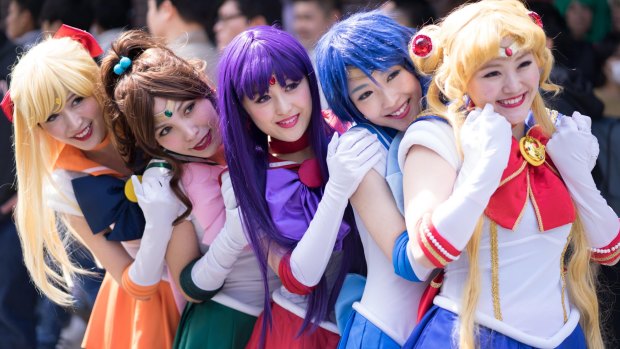
Credit: SHUTTERSTOCK
GO TO A BASEBALL GAME
Attending a sumo wrestling bout is usually high on first-time visitors' lists, and rightly so. On your second trip to Japan, however, try the new sporting obsession: baseball. To attend a top-league baseball game in Japan is to witness the way a distinctly American pastime has been shaped to fit the Japanese audience, with possibly the world's most polite supporters, and the best food and drink you'll ever see in a sporting arena.
STAY IN A TEMPLE
There are so many styles of accommodation to experience in Japan: the ryokan, or traditional inn; the capsule hotel, with its tiny compartments; the minshuku, or Japanese B&B; and perhaps most interesting of all, the shukubo, or temple stay. Certain Buddhist temples across the country offer accommodation to travellers, which means a simple futon to sleep on, two vegetarian meals, and an early start for morning prayers.
LEARN THE ART OF KAISEKI
Anyone who has enjoyed a kaiseki meal in Japan will understand the complexity of this traditional style of eating, where multiple intricate dishes that showcase seasonal ingredients are served in plush surrounds. To take things to the next level, why not learn to prepare a kaiseki meal yourself? Sumaya in Kyoto offers cooking classes that delve deep into local cuisine.
BECOME AN OTAKU
"Otaku" is the Japanese term for someone obsessed with computer games, manga comics, J-Pop or any other modern cultural niche. To witness the passion of the otaku – or to become one yourself – explore the districts of Tokyo where these subcultures thrive: the likes of Ikebukuro, Nakano and Akihabara, where manga shops, electronics stores and arcade parlours are de rigueur.
DELVE INTO SAKE
Sake is a simple drink to enjoy, and yet a complex beast to understand. Japanese rice wine has as much nuance and regional variation as wine made from grapes, with thousands of artisanal brewers turning out amazingly good products, and yet where do you start? The answer is to spend an evening with a sake expert in Tokyo, learning from a master. This experience is available through Inside Japan Tours.
CULTURAL QUIRKS
A refresher course on etiquette in Japan
Always carry business cards
It doesn't matter if you're in the country for work or pleasure: the exchange of business cards is such an important transaction in Japan, a way of demonstrating your interest in another person and respecting their position and career. Always carry yours.
Don't eat on the run
No one eats on the street in Japan. You don't grab a takeaway burger and scarf it on the train. You don't pick up a Starbucks coffee and drink it while you walk. If you want to fit in, consume your food and drink in the place you bought it.
Don't tip
One of the true glories of travel in Japan is that you never have to worry about tipping the right amount. You just don't tip. At all. Don't even leave your change on the table – someone will run after you to give it back.
Take off your shoes
Any time you're entering someone's home, remove your shoes. Keep an eye out, too, for restaurants in which people take off their shoes (you'll see them all neatly lined up in racks by the door), and certain temples.
Bow
If feels a little awkward at first, but if you want to greet people in the way in which they're accustomed, then you need to bow. Don't worry too much about the exact etiquette – locals will cut you plenty of slack. Just tilt forward at the waist, with arms by your sides, and you're all set.
Don't rub your chopsticks together
Any time you're presented with wooden chopsticks at a restaurant, it's considered rude to snap them apart and then rub them together – the suggestion being that the chopsticks are of poor quality. Just lay them on their rest.
Always queue
This is no place to be pushing in, no place to take an elbows-out, every-man-for-themselves approach. The Japanese are fastidious queuers who will wait patiently in line to board a train, or to buy a coffee, or to do pretty much anything, really.
Save your rubbish
You'll notice that there are almost no public rubbish bins in Japan. Vending machines will usually have a small receptacle for recyclable cans, but that's it. The idea is that you'll carry your rubbish with you and dispose of it all properly at your home or hotel.
Pour other people's drinks
Should you find yourself out drinking with new Japanese friends – which could very well happen – bear in mind it's bad form to pour your own drink from a communal vessel. Always pour others' and wait for someone to top you up.
Don't chase geishas
The geishas in Kyoto, who are actually called "geikos" or "maikos", have been mobbed recently by tourists trying to get a photo as they make their way to work. Don't add to this problem, as it's extremely bad form, and risks this ancient tradition's long-term viability.
See also: Twenty things that will shock first-time visitors to Japan
See also: The nine hidden highlights of Japan
TRAVELLER TOURS - SEE THE BEST OF JAPAN WITH CHEF ADAM LIAW
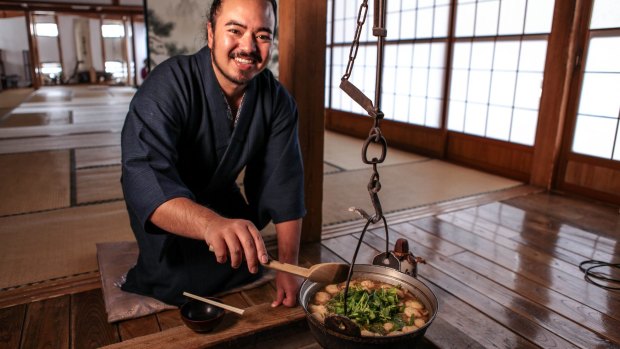
Sign up for the Traveller Deals newsletter
Get exclusive travel deals delivered straight to your inbox. Sign up now.